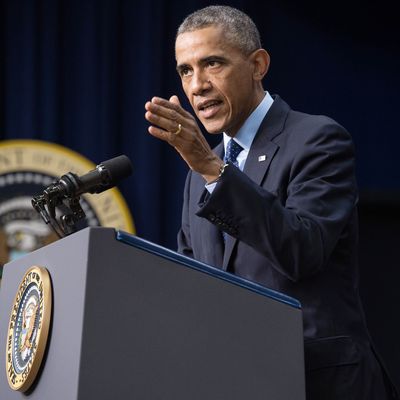
It is Jobs Day, the monthly source of much thumb-sucking and spin, where everybody sees a number, confirms their priors, and then argues. For the record, the jobless rate dropped to 5.9 percent in September, with the economy adding nearly 250,000 new jobs. That is the lowest unemployment rate since mid-2008.
But Jobs Day has become less and less of a tentpole event in the economic data calendar. In part, that is because the story of the recovery has become static: It just keeps chugging along at the same decent-enough pace. It is also because the unemployment rate — the headline number in the jobs report — has started telling us less and less about the state of the economy.
Don’t take my word for it. No less an authority than Janet Yellen, the chair of the Federal Reserve, has said that she personally relies on a dozen indicators. “The assessment of labor market slack is rarely simple and has been especially challenging recently,” she said this August. “Estimates of slack necessitate difficult judgments about the magnitudes of the cyclical and structural influences affecting labor market variables.”
A broader set of indicators generally gives a dimmer view of the economy — and that remains true this month, good headline number aside. Labor-force participation has declined — partially because the baby boomers are retiring, but also because prime-age workers are fleeing the job market. Churn has remained slow, with workers too timid to quit their jobs. The middle class is poorer than it was when the recession started, poorer than it was when the recession ended, and poorer than it was in 1989. In real terms, wages are stagnant even though the jobless rate has dropped.
At the same time, the earnings of the wealthiest Americans have surged higher. Corporations are rolling in profits. Growth has strengthened. And the stock market has gone on an extraordinary tear.
Most Americans simply don’t feel the recovery improving their lives — a hard truth that Barack Obama acknowledged in a surprisingly honest and thus somewhat depressing speech at Northwestern University yesterday.
Our broader economy has come a long way, but the gains of recovery aren’t yet broadly shared. We can see that homes in our communities are selling for more money, and that the stock market has doubled, and maybe the neighbors have new health care or a car fresh off an American assembly line. And those are good things. But the stress that families feel — that’s real, too. It’s still harder than it should be to pay the bills and put some money away. Even when you’re working your tail off, it’s harder than it should be to get ahead.
His speech was in part triumphalist, arguing that America has done better than its first-world peers and that the stage is set for stronger growth in the future. But he still acknowledged that it might take time, a long time, for the middle class to recover.
We’ve got to realize that the trends that have battered the middle class for so long aren’t ones we’re going to reverse overnight. The facts I just laid out don’t mean much for someone at home who’s underpaid, underemployed, or out of work for too long. And there are no silver bullets for job creation or faster wage growth. Anyone who tells you otherwise isn’t telling you the truth. But there are policies that would grow jobs and wages faster now and in the long run.
So applaud this jobs report. It’s a legitimately good one. But do not let it change your view of the economy too much. Growth might be accelerating, but the underlying story of the recovery is not changing. For tens of millions of families, that unemployment rate is nothing but a number.





























